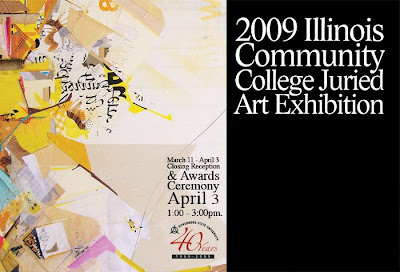The 2009 Illinois Community College Juried Art Exhibition is an opportunity to celebrate the creative work of emerging artists and to get a glimpse of the extraordinary talent in the region. Selected works by art students currently enrolled in Illinois community colleges will be on display in the GSU Visual Arts Gallery from March 11 through April 3. Exhibiting artists include students from Heartland Community College, Illinois Central College, John A. Logan College, John Wood Community College, Joliet Junior College, Kankakee Community College, Kishwaukee College, Lewis & Clark Community College, Lincoln Land Community College, McHenry County College, Morton Community College, Oakton Community College, Parkland Community College, Prairie State College, South Suburban College, Triton College, and Waubonsee Community College. A closing reception to celebrate the show and the artists and present merit awards is on Friday, April 3, from 1 to 3 p.m., in E-Lounge. Juror Jeremy Biles, ...












